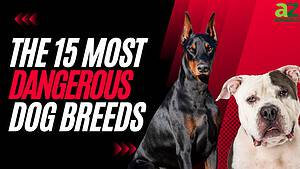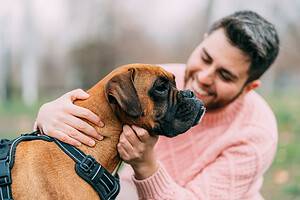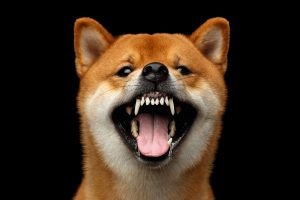Siberian Huskies are beautiful sled dogs with mid-length, fluffy fur. Though most people have seen at least one Husky in their lifetime, you may not have seen the rare and unique coat colors in this article.
Rare Husky coat colors include white, agouti, sable, piebald, splash, and red-tinted black. Isabella Huskies have white coats with fawn pigment. This is another rare color that many people don’t see as a true, pure white.
In this article, we’ll discuss the standard Siberian Husky colors, their rarity, and some non-AKC-approved coat colors that you might rarely see.
AKC Standard Siberian Husky Colors
The following coat colors are seen as standard by the American Kennel Club (AKC):
- Agouti and white
- Black and white
- Gray and white
- Red and white
- Sable and white
- Brown and white
- Black, tan, and white
- Black
- White
These are the most commonly seen Husky colors since most breeders try to adhere as closely as possible to breed standards. This goes double for reputable breeders who are breeding responsibly, rather than for money or popularity.
Below, we’ll discuss some of the rarest Husky colors you’ll see.
Rare and Unique Siberian Husky Colors
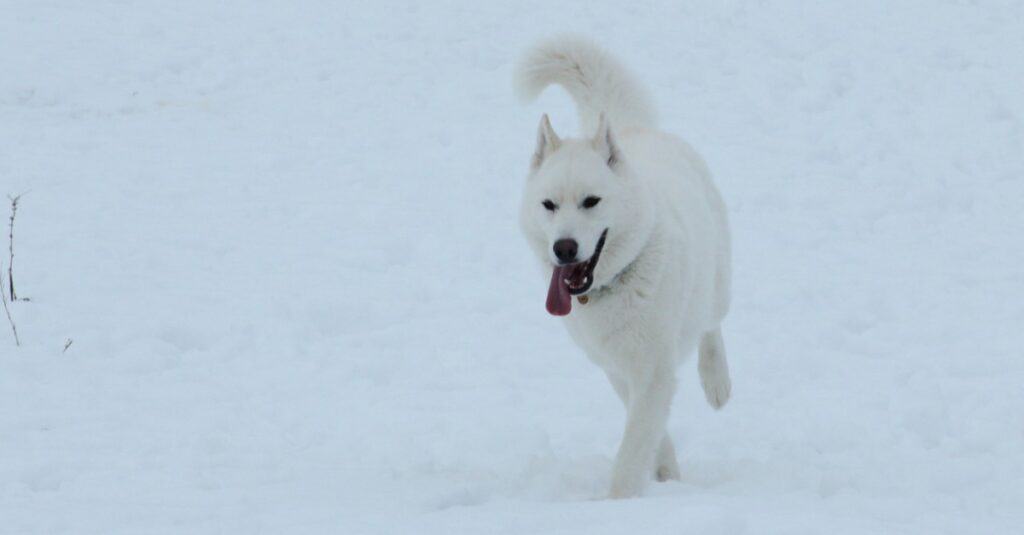
White is one of the rarest Husky colors.
©iStock.com/Nicholas Chase
1. White
White Huskies are some of the rarest Huskies you’ll see. In order to be fully white, a Husky needs two parents with the recessive white gene.
Some white Huskies are albino, but not all. Many white Huskies have pigment as shown in the black skin around their noses, mouths, and eyes.
Albinism in dogs leads to several disabilities and health problems including increased risk of the following: deafness, blindness and other eye problems, light sensitivity, sunburn, and skin cancer.
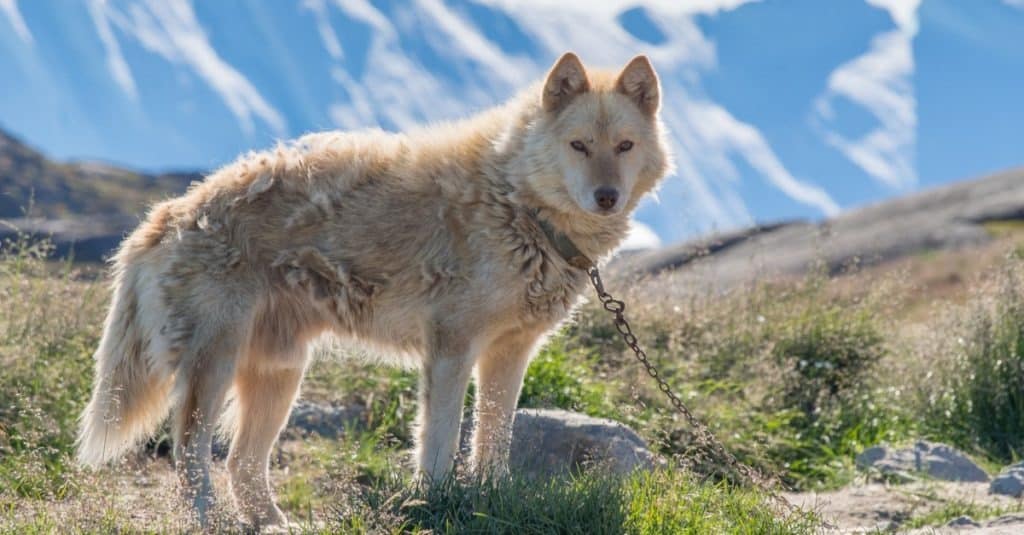
Isabella Huskies are white, but with fawn coloring in their coats.
©Tony Skerl/Shutterstock.com
2. Isabella
Isabella Huskies are white with shades of fawn, or dilute red, in their coats. These aren’t seen by most as “true white” Huskies due to this added color.
The AKC specifies that Isabellas won’t have black points, while white Huskies can have black points.
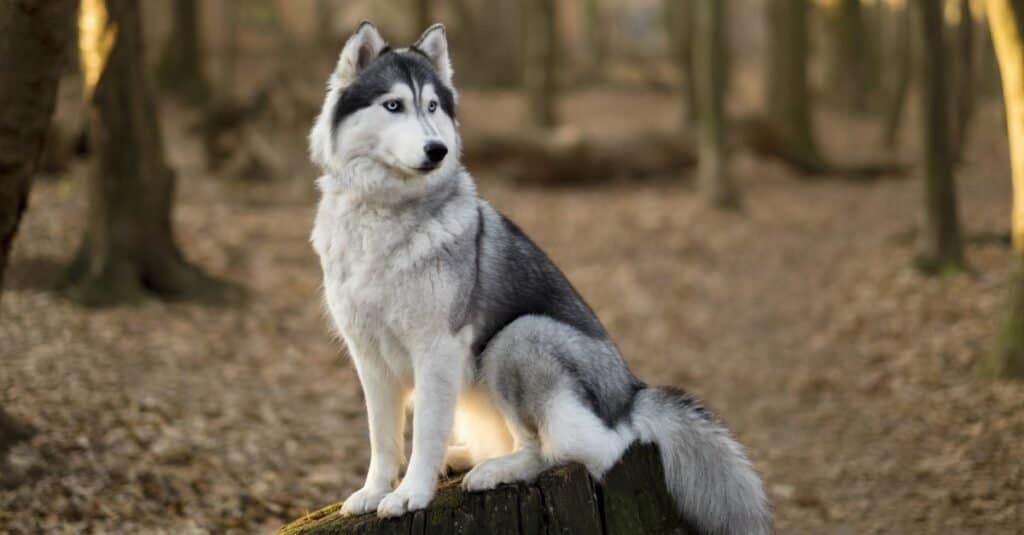
Agouti Huskies are gray and white.
©Kateryna Orlova/Shutterstock.com
3. Agouti and White
Agouti and white Huskies look rather wolf-like! They have agouti, a wolfy gray, fur mixed with white fur.
Typically these dogs have white legs and faces, with an agouti stripe between the eyes and a primarily agouti coat throughout the torso. Some dogs may have more agouti coloring on their faces and legs than described here, however!
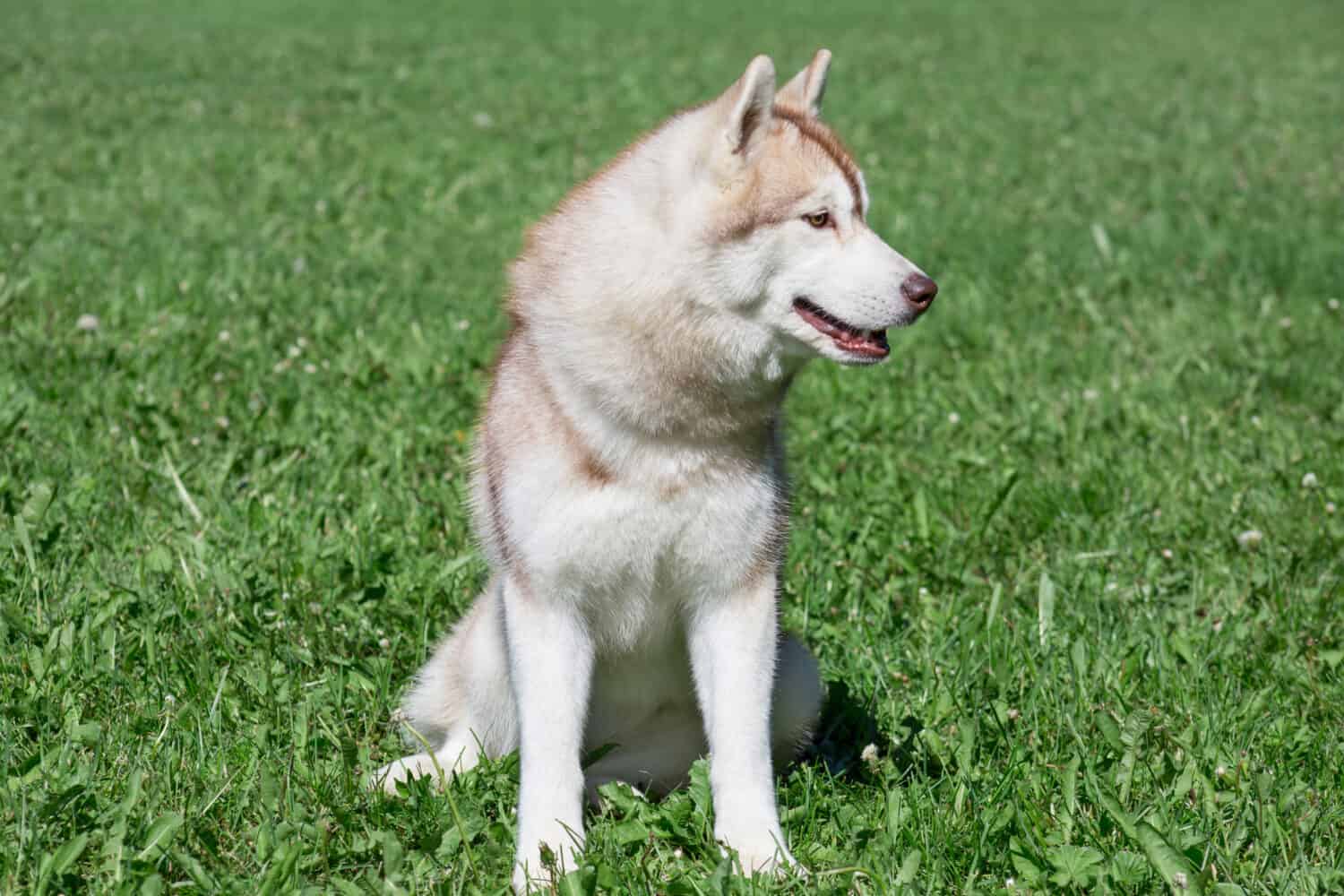
Sable Husky fur has light roots and dark tips.
©Tikhomirov Sergey/Shutterstock.com
4. Sable
Sable fur has light roots and dark tips, which can make a Husky look like they have two intertwined coat colors. This creates a marble effect.
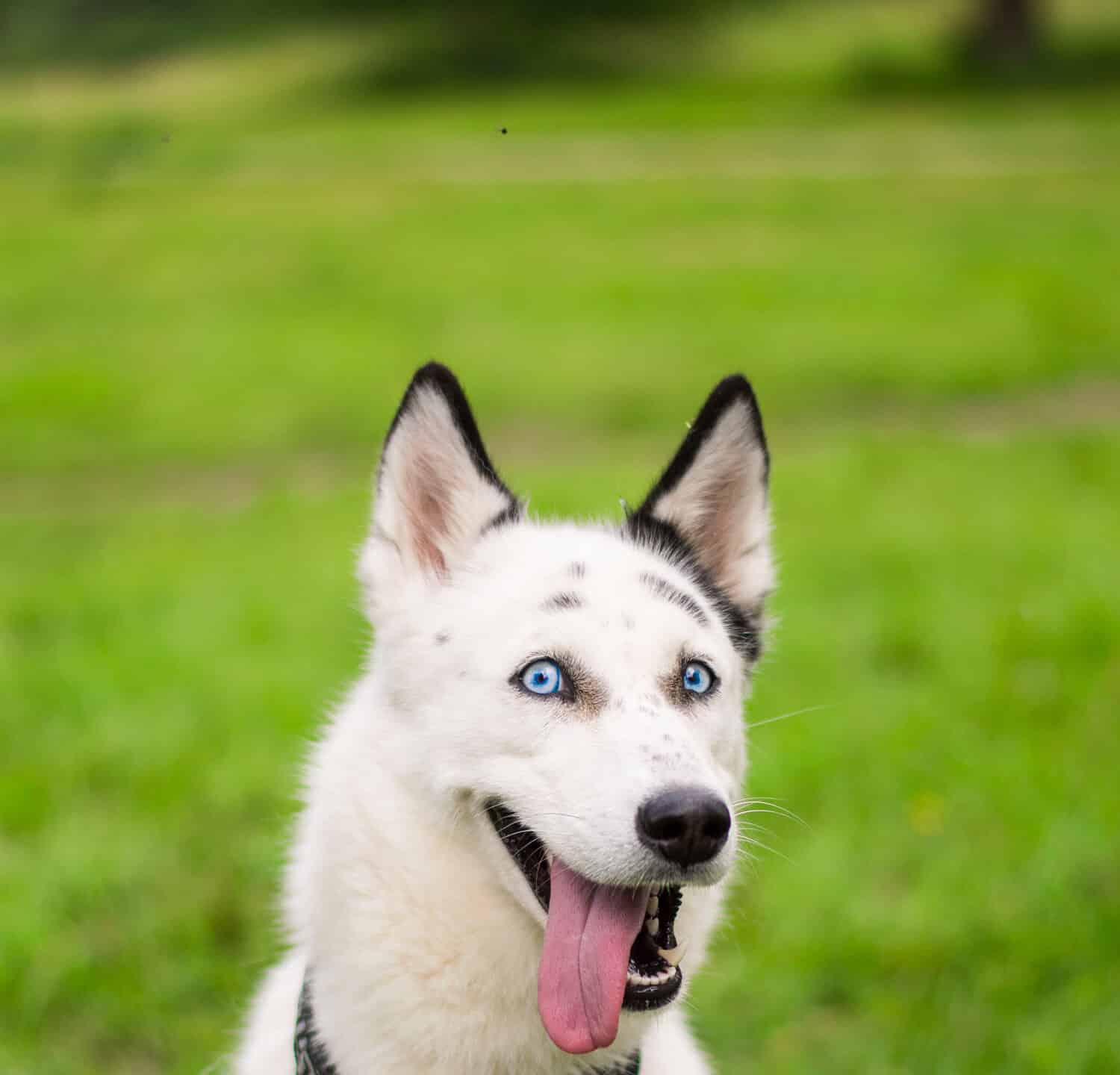
Piebald Huskies are white with dark patches.
©Anastasiia Ruzhynska/Shutterstock.com
5. Piebald
Piebald Huskies are white with darker patches of fur. They may have few or many patches in a variety of colors, such as gray or black.
The AKC specifies in the breed standard that piebald dogs shouldn’t be mistaken for merle Huskies, which aren’t allowed under their breed standard.
6. Red tint
Red tint, or grizzled, Huskies have a red tint to their black fur. This typically happens from sun exposure, and the dogs are usually black and white in color.
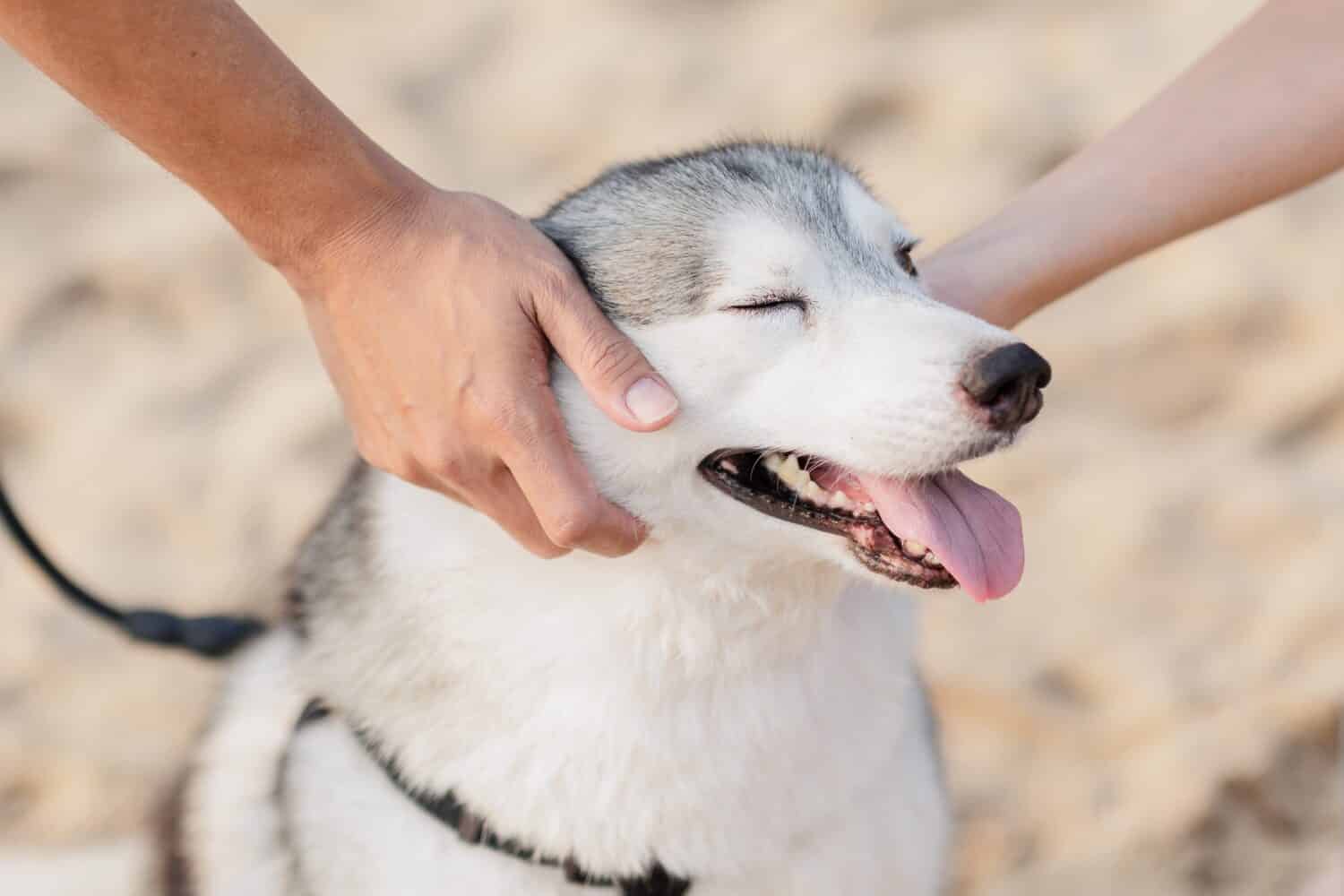
Splash Huskies are mostly white with “splashes” of color.
©Noom HH/Shutterstock.com
7. Splash
Splash, or pinto, Huskies are bi-colored, but with more white than most other dogs of that color combination. They appear to have “splashes” of color throughout their white coats.
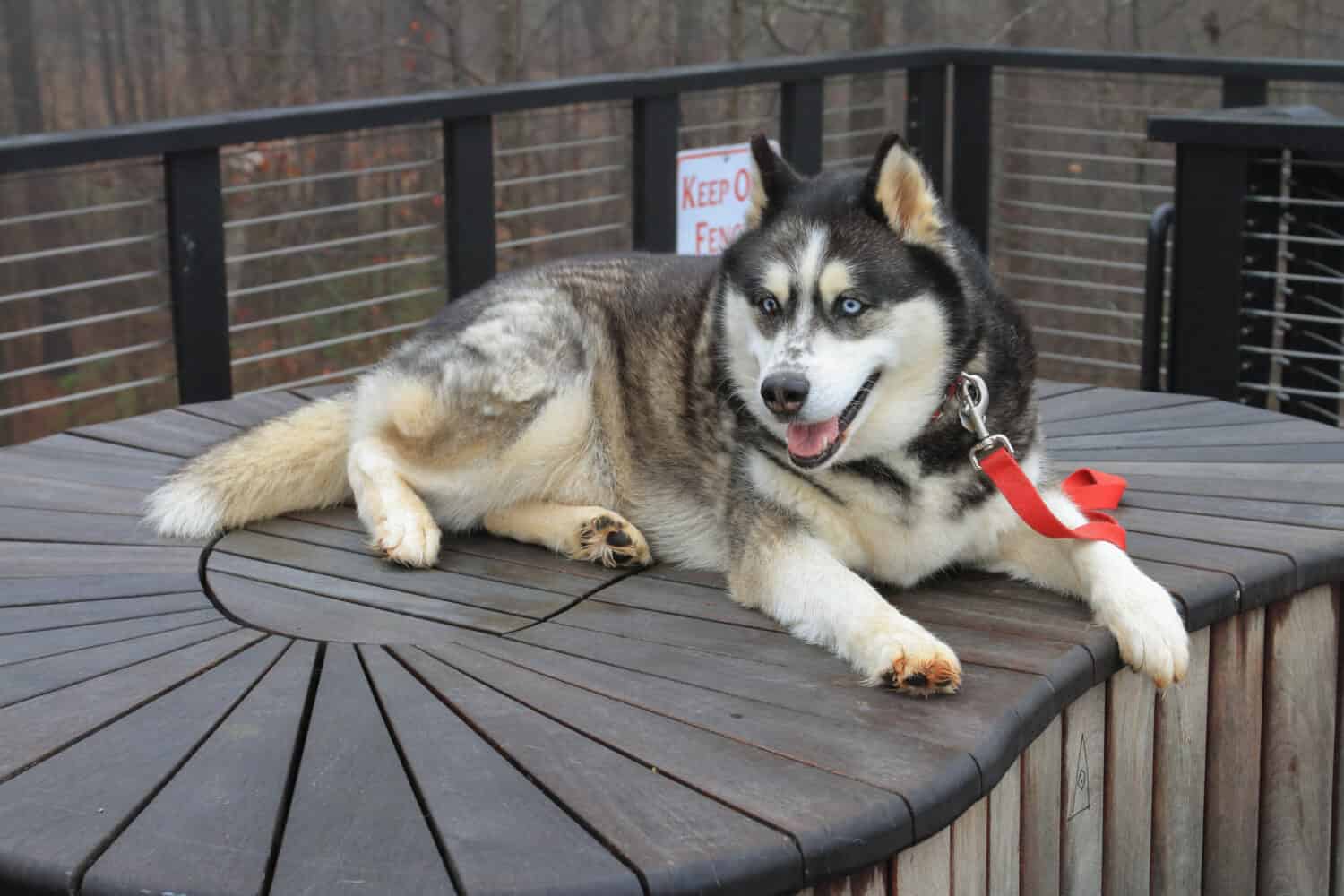
Black, tan, and white is the only tricolor Husky coat accepted by AKC breed standards.
©Gregory Simpson/Shutterstock.com
8. Black, Tan, and White
Tri-colored black, tan, and white Huskies are pretty unusual since we typically see bi-colored coats in this breed.
9. Black
Pure black Huskies aren’t the rarest out there, but they’re not super common either! Though the gene for black fur is dominant, it’s uncommon that a Husky doesn’t also develop other fur colors alongside the black.
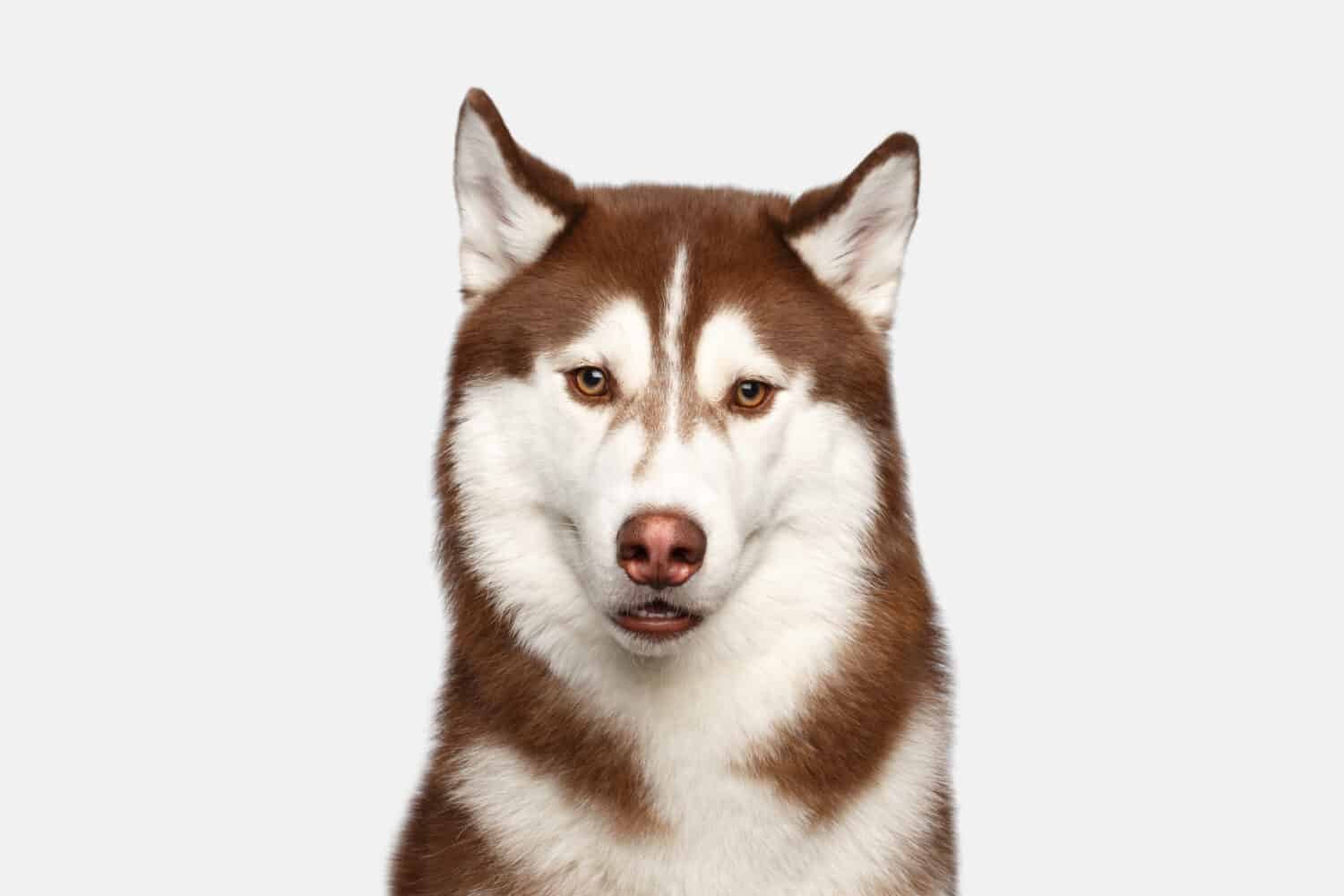
Brown and white Huskies have deep brown coats caused by a recessive gene.
©Seregraff/Shutterstock.com
10. Brown and white
Brown and white coats are caused by recessive genes, but they aren’t excessively rare. You’ll see them less than some other variations, however.
The brown can range from a tan to a deep brown, with the typical bi-colored markings common in Huskies–white around the eyes and side of the face, and on the legs, chest, and stomach.
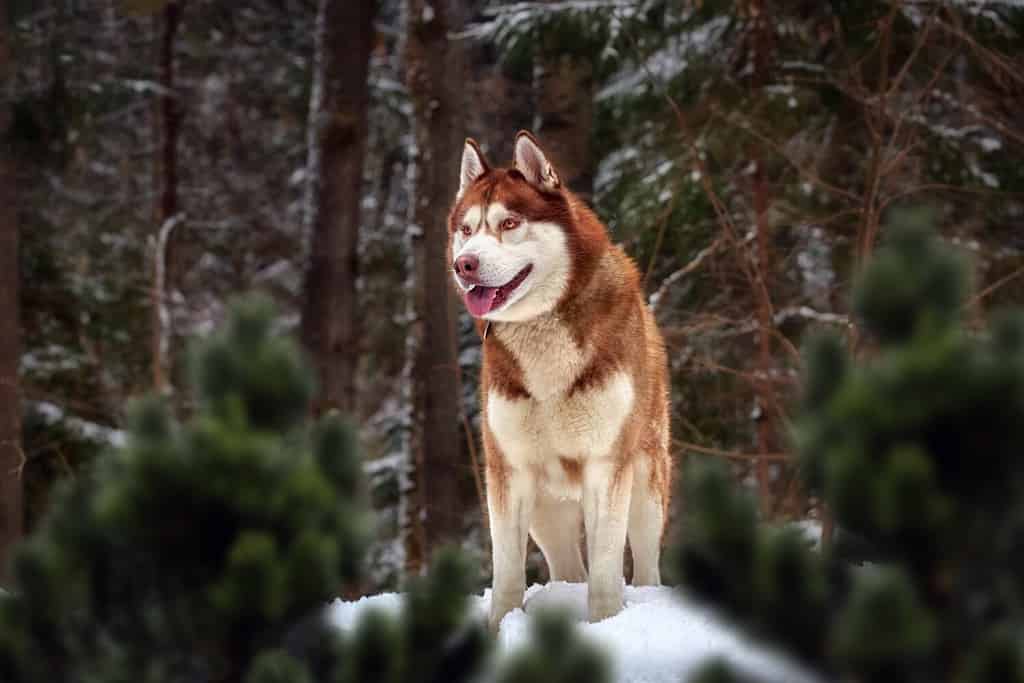
Red and white Huskies have light to deep orange coats.
©Konstantin Zaykov/Shutterstock.com
11. Red and White
Red and white Huskies are similar to brown and white but with a deep orange-brown color. This color husky often comes with a pink nose instead of the usual black nose.
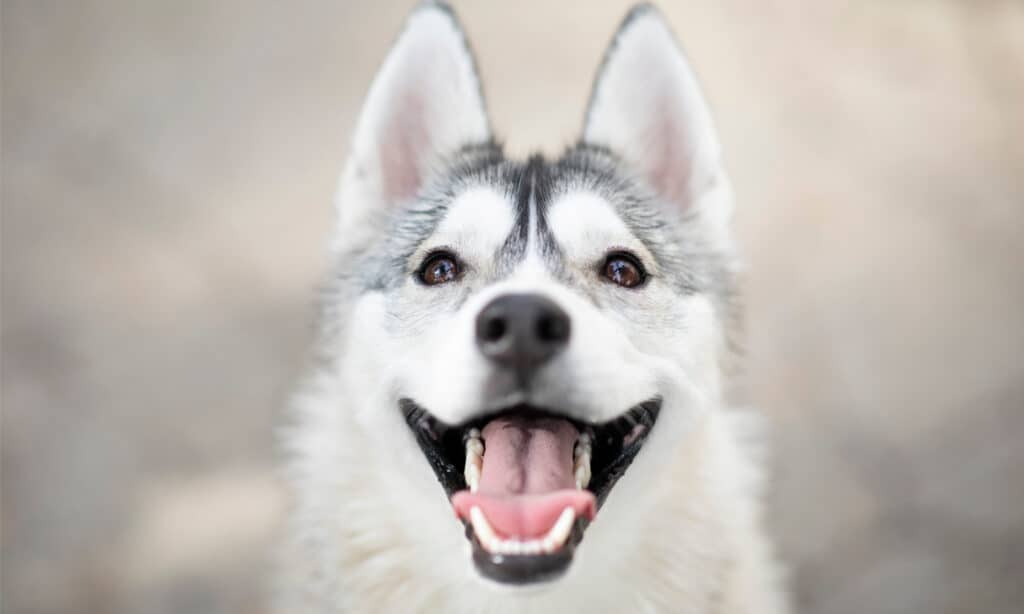
Gray and white Huskies are very common.
©iStock.com/KM Photography
12. Gray and White
Gray and white Huskies are very common! Like the others above, they have white markings with most of their gray fur on their backs, sides, and the tops of their heads.
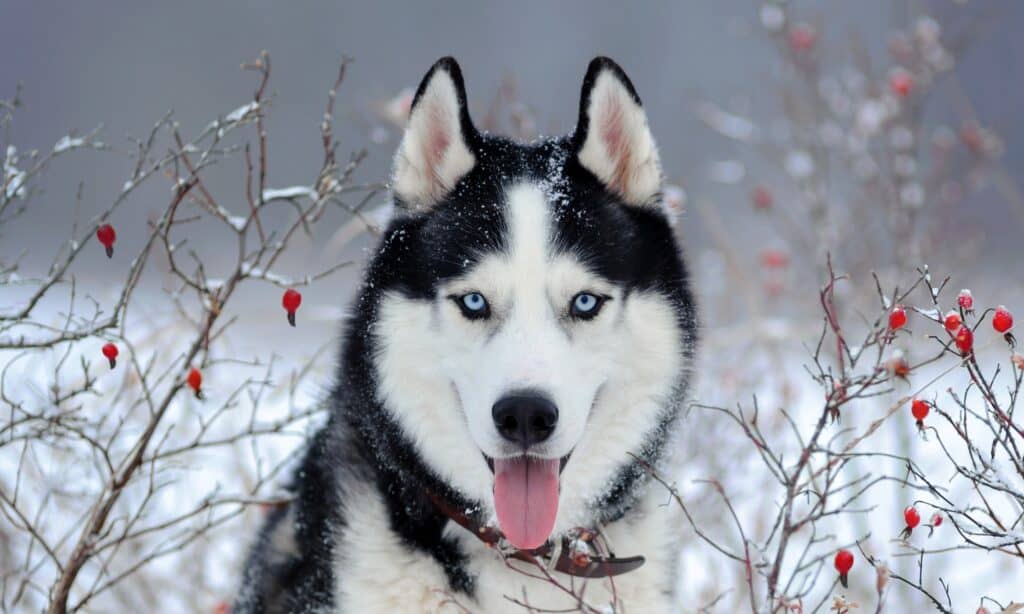
Black and white Huskies are one of the most common colors.
©iStock.com/format35
13. Black and White
Black and white Huskies are also common and have the same general markings as those above.
I hope you’ve enjoyed learning more about these rare and unique Husky coat colors! Remember that appearance isn’t everything–also think about how you will exercise, train, and budget for your future pup before adopting.
Summary of 13 Rare and Unique Husky Colors
| Rank | Unique Husky Color |
|---|---|
| 1 | White |
| 2 | Isabella |
| 3 | Agouti and White |
| 4 | Sable |
| 5 | Piebald |
| 6 | Red Tint |
| 7 | Splash |
| 8 | Black, Tan, and White |
| 9 | Black |
| 10 | Brown and White |
| 11 | Red and White |
| 12 | Grey and White |
| 13 | Black and White |
The photo featured at the top of this post is © mary.foto.great/Shutterstock.com
Ready to discover the top 10 cutest dog breeds in the entire world?
How about the fastest dogs, the largest dogs and those that are -- quite frankly -- just the kindest dogs on the planet? Each day, AZ Animals sends out lists just like this to our thousands of email subscribers. And the best part? It's FREE. Join today by entering your email below.
Thank you for reading! Have some feedback for us? Contact the AZ Animals editorial team.




